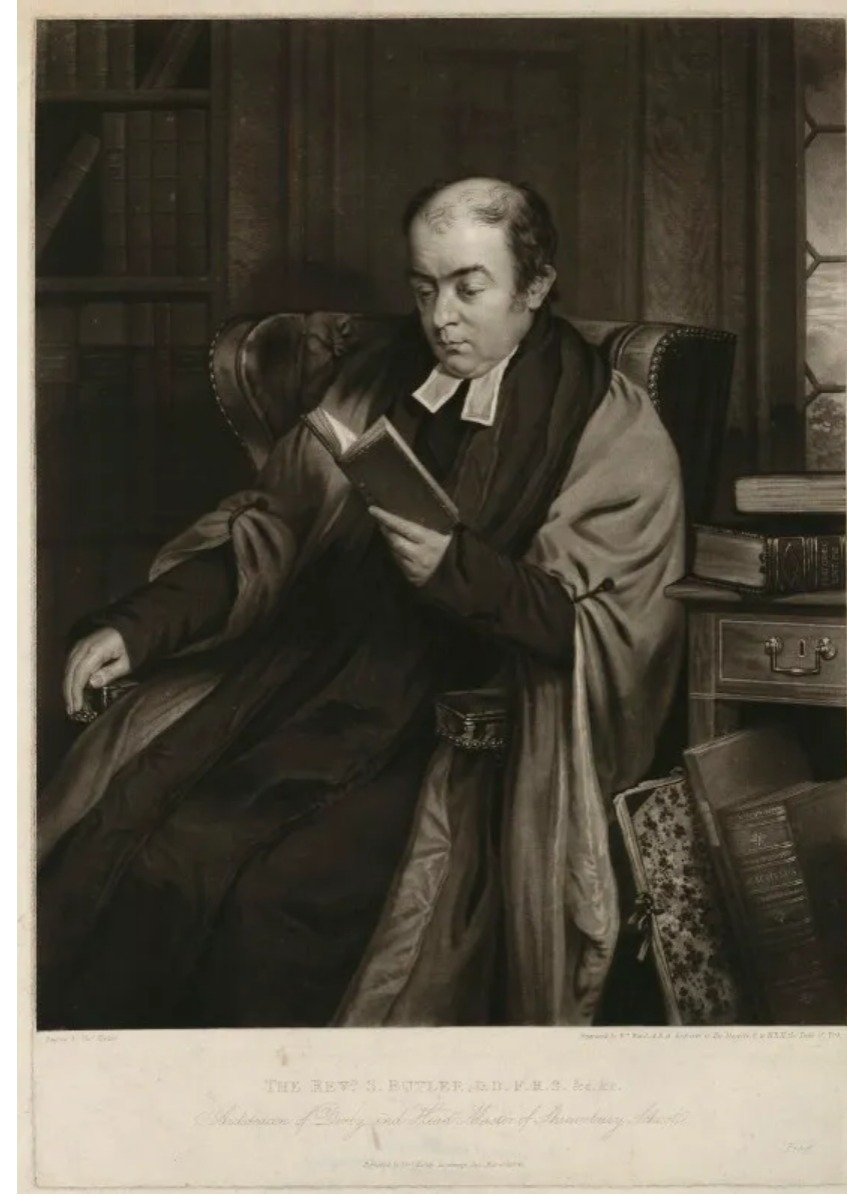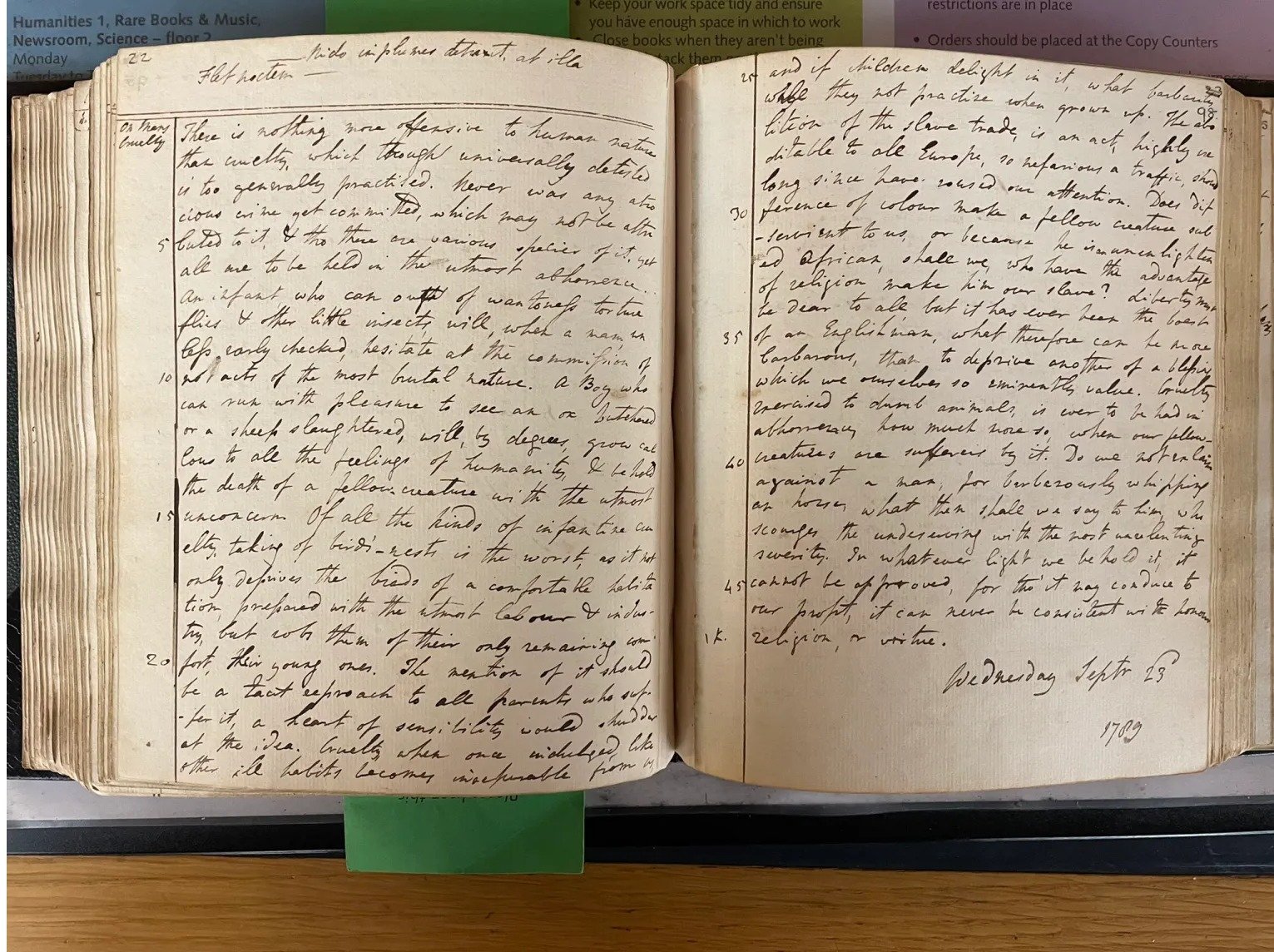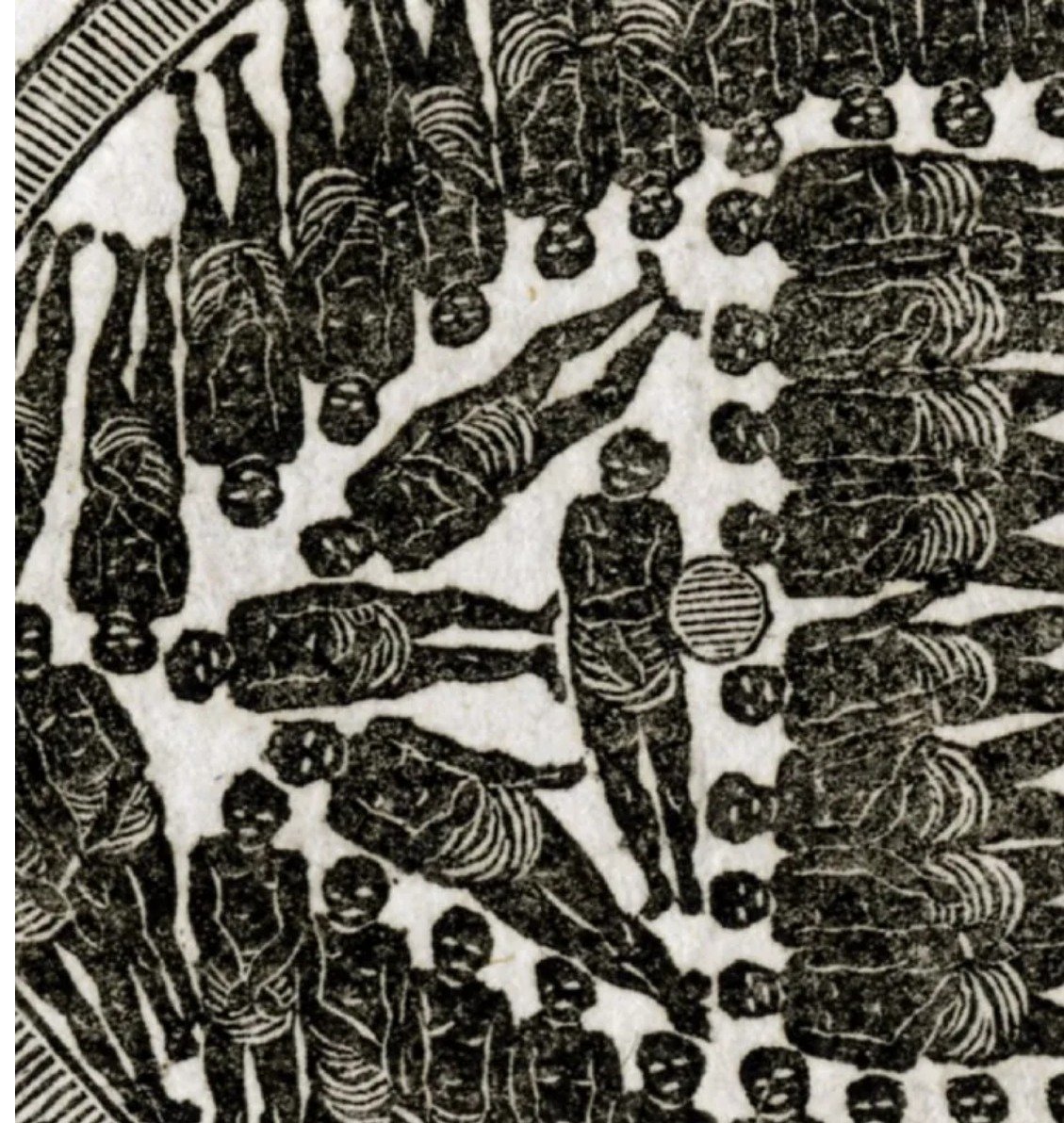Tomos Evans (University of Birmingham)
"So nefarious a traffic": a newly-discovered eighteenth-century schoolboy's attack on the transatlantic slave trade
Before attending St John’s College, Cambridge, and before becoming the Headmaster of Shrewsbury School, Dr Samuel Butler (1774–1839) attended Rugby School, having been admitted to Rugby on 31st March 1783. He was a gifted classical scholar, winning several prizes for Greek and Latin compositions at Cambridge in the 1790s. Among the many Latin, Greek, and English prose compositions from his schooldays (or “themes” – essays that have a short, classical tag as its theme, particularly on moral topics), there is an example of the fifteen-year-old Butler expressing strong Abolitionist sentiments in a piece of homework that he wrote on Wednesday 23rd September 1789, now preserved in the British Library.
Samuel Butler by William Ward, after Thomas Kirkby mezzotint, (1819). NPG D32495 © National Portrait Gallery, London.
The schoolboy Butler’s attack on the transatlantic slave trade (London, British Library, Add MS 34595, fols. 97v–98r. Image credit: British Library.
Butler’s theme is titled “On Mans Cruelty” and takes its cue from Virgil’s Georgics IV.513–14 when the poet recounts the nightingale’s mourning after a “heartless ploughman” (durus arator) steals her chicks. Thesuffering of Virgil’s nightingale serves as a springboard for the teenager to reflect on the greatest form of abject cruelty of his time: the transatlantic slave trade that was, in his day, continuing to thrive commercially. In the first half, Butler describes the cruelty of children torturing or killing animals and insects. (Indeed, one can imagine that Butler’s description of cruel and callous boys may have been inspired directly by his peers at Rugby – an infamously tough environment in its day). Although Butler makes similar remarks about sadistic children torturing flies growing up to become callous adults who commit atrocious crimes in two of his verse compositions in Latin (which are also titled “On Mans Cruelty”) from 26th and 27th March 1789, Butler’s attack on slavery in the second half of this prose composition is unprecedented:
“There is nothing more offensive to human nature than cruelty, which though universally detested is too generally practised. Never was any atrocious crime yet committed, which may not be attributed to it, & tho there are various species of it, yet all are to be held in the utmost abhorrence. An infant, who can out of wantoness torture flies & other little insects, will, when a man unless early checked, [not] hesitate at the commission of such acts of the most brutal nature. A Boy who can run with pleasure to see an ox butchered or a sheep slaughtered, will, by degrees, grow callous to all the feelings of humanity, & behold the death of a fellow creature with the utmost unconcern.
Of all the kinds of infantine cruelty, taking of birds’-nests is the worst, as it not only deprives the birds of a comfortable habitation, prepared with the utmost labour & industry, but robs them of their only remaining comfort, their young ones. The mention of it should be a tacit reproach to all parents who suffer it, a heart of sensibility would shudder at the idea. Cruelty, when once indulged, like other ill habits becomes inecsurable [i.e. inexorable] from us, and if children delight in it, what barbarity will they not practice when grown up?
The abolition of the slave trade, is an act highly creditable to all Europe, so nefarious a traffic, should long since have roused our attention. Does difference of colour make a fellow creature subservient to us, or because he is an unenlightened African, shall we, who have the advantage of religion make him our slave? Liberty must be dear to all, but it has ever been the boast of an Englishman, what therefore can be more barbarous, than to deprive another of a blessing which we ourselves so eminently value.
Cruelty exercised to dumb animals, is ever to be had in abhorrency, how much more so, when our fellow creatures are sufferers by it. Do we not exclaim against a man, for barbarously whipping an horse, what then shall we say to him, who scourges the undeserving with the most unrelenting severity. In whatever light we behold it, it cannot be approved, for tho’ it may conduce to our profit, it can never be consistent with honour, religion, or virtue.”
Considering that Butler’s remarks are dated five years before the abolition of slavery in Revolutionary France, why would the teenage Butler express such Abolitionist views in an environment like Rugby? The school, like other Public Schools of the eighteenth and nineteenth centuries, was one of the principal bastions of empire-building in educating so many boys who would ultimately enter careers in colonial administration. How, then, did Butler come to hold such views? And why did he express them in his homework?
One answer could lie in considering what Butler could have been reading as a teenager. There is a precedent of attacking the slave trade within a Latinate context. Thomas Clarkson (1760–1846), one of the leading Abolitionists in England, published powerful accounts and images – such as the famous diagram of a horrifically and densely-packed slave ship – throughout his lifelong opposition to slavery. His first Abolitionist publication, however, was based on his prize-winning Latin essay at the University of Cambridge that he penned in 1785 where he attended (as Butler would) St John’s College. Like Butler’s essay, Clarkson’s anti-slavery treatise was spurred by a set theme: “Is it lawful to make slaves of others against their will?” (Anne liceat invitos in servitutem dare). The following year, Clarkson translated and developed his Latin essay, which he published in 1786: An Essay on the Slavery and Commerce of the Human Species. As an ambitious classicist, (one who would, like Clarkson, win prizes for his Latinity at Cambridge), could Butler have sought out and been inspired by Clarkson’s Essay?
"Description of a slave ship," by an anonymous artist, wood engraving, 328 mm x 444 mm. "This is one of several prints produced from the same woodblocks showing plans and sections of the slave ship "Brookes" of Liverpool. A model of the ship was used by William Wilberforce in the House of Commons to demonstrate conditions on the Middle Passage. The woodcut was first produced in 1786 to illustrate various works by Thomas Clarkson, and was then distributed separately by abolitionists." Image credit: Wikimedia Commons.
Clarkson’s Essay on the Slavery and Commerce of the Human Species grew out of his original Latin essay and the publication brought him into association with other leading abolitionists such as Granville Sharpe and William Wilberforce. While Clarkson’s English essay is much more expansive than the original Latin version, the latter scrutinises the system of slavery in Ancient Greece and Rome as well as Aristotle’s arguments about the ‘natural slave’ in the politics, overturning any possible justifications that contemporary, pro-slavery advocates might wish to draw from Ancient Greek and Roman society. In the headnote to the original Latin essay, 59 years later – photocopies of which were kindly sent to me by archivists at Atlanta University’s Robert Woodruff Library – Clarkson jotted down a note to his grandson, emphasising how pivotal the Latin essay was in his lifelong campaign for abolitionism:
“For my grandson – to be delivered to him when he comes to years of discretion. My Latin Essay which obtained the first prize in the University Of Cambridge in 1785. Reflections on this essay caused me To take up the cause of the abolition of the slave-trade and of slavery – So that this little essay, through me and my exertions for 59 years, May be said to have been the cause of all that has been done on the subject Throughout the whole world – you see what a little thing has given birth to Great events. Let no man despair in a good and righteous cause. The difficulties however great may be surmounted.”
Alongside Clarkson’s Essay, Butler could also have read – in the same year he wrote this school-exercise – Olaudah Equiano’s very popular biography, The Interesting Narrative of the Life of Olaudah Equiano (1789). With the encouragement of the Abolitionists such as Clarkson, Equiano published his autobiography in 1789 which was an enormous commercial success, selling out immediately. Perhaps the young Samuel Butler had read Equiano’s account of horrifying instances of cruelty and abuse against other slaves in the West Indies during his captivity?
Equiano by Daniel Orme, frontispiece of his autobiography (1789). Image credit: Wikimedia Commons.



